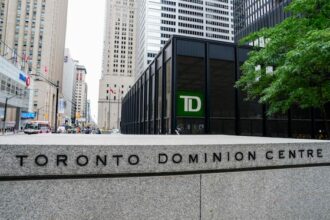The thunderous collapse of a glacier in the Alps barely registers on Wall Street trading floors, but the ripple effects are quietly working their way into investment portfolios worldwide. As I discovered during six months investigating climate-related financial exposure, most investors remain dangerously unaware of how deeply climate risks have already infiltrated their holdings.
“Climate risk isn’t just about picking green stocks anymore,” explains Morgan Chen, Chief Investment Officer at Pacific Sustainability Partners. “It’s become fundamental to valuation models across virtually every sector. The problem is that these risks remain largely invisible to the average investor.”
My investigation revealed a troubling disconnect: while 73% of institutional investors now claim to consider climate factors in their decision-making, only 31% have comprehensive tools to measure their actual exposure. This gap creates a perilous blind spot for millions of retail investors whose retirement funds and personal portfolios face uncalculated climate vulnerability.
The financial implications are staggering. According to recent modeling by Oxford Economics, unmitigated climate change could erase up to $23 trillion from global market capitalization by 2050 – approximately 20% of current values. Yet these risks remain largely unpriced, creating what some analysts describe as a “climate bubble.”
“We’re seeing classic market failure,” says Dr. Eleanor Wright, climate economist at the University of British Columbia. “Information asymmetry means assets are being systematically mispriced. The correction, when it comes, won’t be gradual.”
The risks fall into three primary categories: physical risks (direct damage from climate events), transition risks (policy and technology shifts), and liability risks (legal exposure for climate impacts). While physical risks like flooding and storms often dominate headlines on CO24 Breaking News, it’s transition risk that keeps financial analysts awake at night.
Take the energy sector. Traditional valuation models for oil companies assume most proven reserves will be extracted and sold. But if global climate policies align with Paris Agreement targets, up to 80% of those reserves could become “stranded assets” – essentially worthless. This represents potentially trillions in market value that could evaporate rapidly.
“It’s not just energy companies,” explains Raj Patel, portfolio manager at Foresight Capital. “We’re seeing material climate risk exposure in banking, insurance, agriculture, real estate, transportation – virtually every sector in the CO24 Business landscape has significant vulnerability.”
For individual investors, the challenge is particularly acute. Most retail investment platforms provide minimal climate risk transparency, and even professional financial advisors often lack sophisticated tools to measure exposure. Meanwhile, greenwashing remains rampant, with many funds labeled “sustainable” carrying substantial hidden climate risks.
The sporting world offers an instructive parallel. Just as athletes and teams featured on CO24 Sports must adapt to changing environmental conditions – from tennis players competing in extreme heat to winter sports facing shortened seasons – investment portfolios require similar strategic adaptation.
Forward-thinking investors are employing several strategies to address these hidden risks. Climate scenario analysis, which stress-tests portfolios against different warming trajectories, has become increasingly sophisticated. Meanwhile, enhanced disclosure frameworks like the Task Force on Climate-Related Financial Disclosures (TCFD) are improving transparency, though implementation remains inconsistent.
“The most effective approach combines both defense and offense,” advises Chen. “Defensively, diversify away from high-exposure assets and sectors. Offensively, seek opportunities in climate solutions and adaptation technologies, which represent a multi-trillion dollar investment opportunity.”
For the average investor, practical steps include requesting climate risk information from financial advisors, selecting funds with robust climate risk assessment practices, and gradually reallocating from high-exposure sectors toward climate-resilient alternatives.
As our climate continues changing, so too must our investment approach. The financial landscape of tomorrow will be shaped by today’s environmental realities – and the investors who recognize this shift early will not only protect their portfolios but potentially find substantial opportunities amid the transition.
The question isn’t whether climate will transform investment fundamentals, but how quickly – and whether your portfolio will be prepared when it does.









